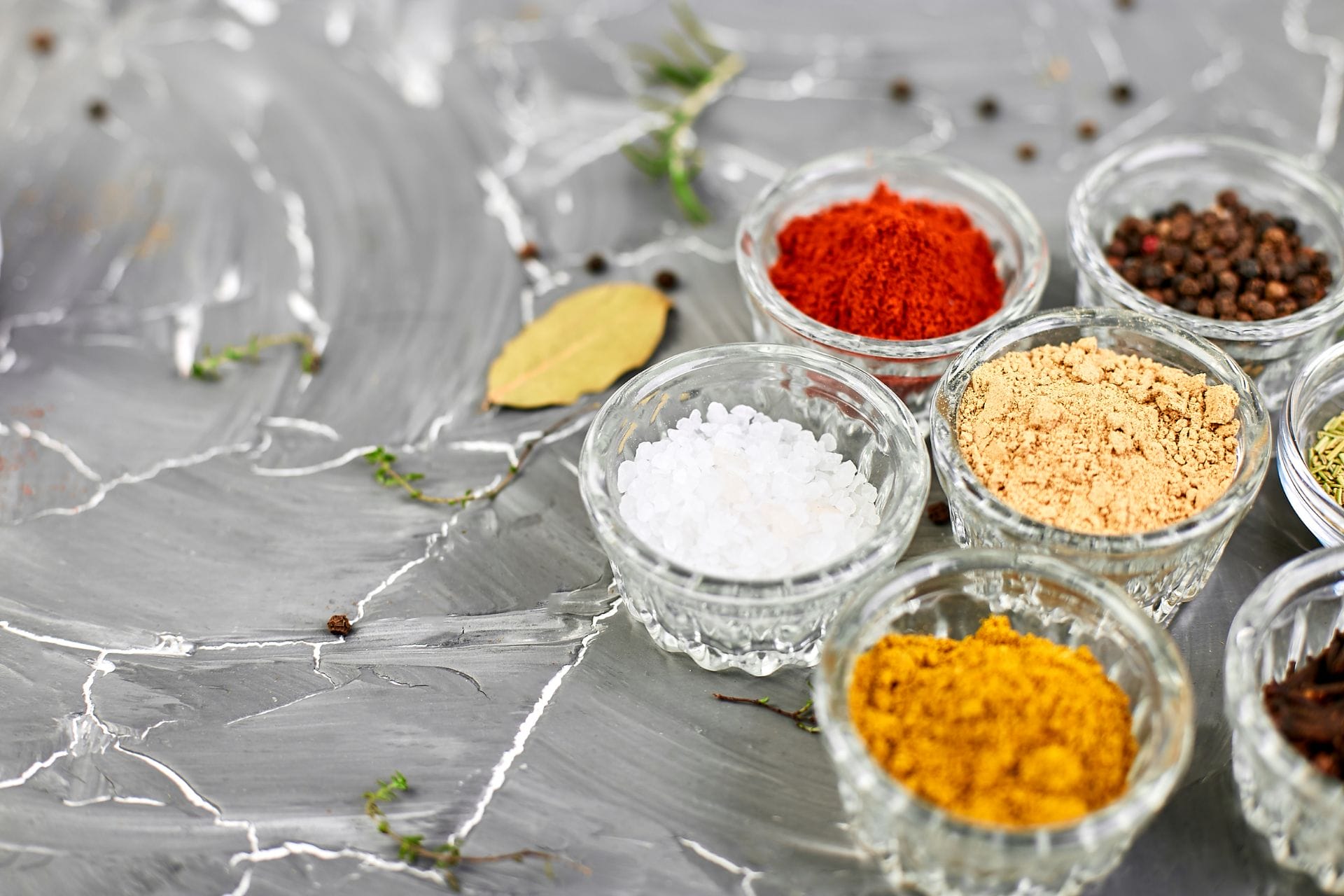
Our kidneys are responsible for filtering out sodium and expel it from the body through the urine. However, if you have chronic kidney disease (CKD), your kidneys have a reduced capacity to clean up excess waste and keep your sodium at a healthy level.
Cutting back on your salt or sodium intake will help keep these health issues at bay. Moving towards a low-sodium diet begins with eliminating salt and sodium-rich condiments and seasonings from your kitchen and table.
Salt is an Omnipresent Threat
Salt is deeply ingrained in our diets. A Mayo Clinic article states that one teaspoon of table salt (a combination of sodium and chloride) contains 2,325 mg of sodium. That is way beyond Dietary Guidelines for Americans’ recommended amount of 1,500 mg per day for CKD patients!
Sodium is also present in a number of processed and packaged foods. Without being mindful of every flavoring, seasoning, and preservative in your food, sodium can easily accumulate in your body.
Don’t get us wrong -- our bodies need sodium for fluid regulation, transmission of nerve impulses, and enabling muscle functions. However, as with any other nutrient or mineral, too much sodium can have adverse effects on our health, especially in people with kidney disease. Eliminating salt from your diet is also a must if you have heart disease or diabetes.
Alarmingly high sodium levels may cause the following:
Shake Off the Salt Habit
In addition to table salt, below are other condiments, sauces, and seasonings you need to limit/avoid to minimize your sodium levels according to the National Kidney Foundation (NKF):
Switch to Natural Herbs and Spices

Ditching salt doesn’t mean you’ll be eating bland and flavorless dishes from here on out. You can still enjoy flavorful meals with the use of herbs and spices. There are plenty of natural and kidney-friendly herbs and spices you can use to perk up your foods without stocking up on sodium.
The use of herbs and spices to enhance a food’s taste and aroma dates back to millions of years ago. Besides making foods more appetizing, herbs and spices also deliver health benefits. They are abundant in antioxidants like vitamin C, vitamin E, beta-carotene, lutein, and lycopene which all help reduce the risk of cancer and heart disease.
RenalTracker’s resident CKD chef Duane Sunwold recommends these kidney-friendly herbs and spices and how to use them on your foods:
Common Grocery Items for CKD Patients
Spice type | Suggested use |
|---|---|
Bay leaf | Vegetables |
Basil | Vegetables |
Caraway | Asparagus, green beans, cabbage, cauliflower, beets, and in dips and sauces |
Curry | Carrots, green beans, and marinades |
Cardamom | Fruits and baked goods |
Dill | Cabbage, carrots, green beans, peas, and in dips |
Ginger | Cauliflower, green beans, and eggplant |
Rosemary | Cauliflower, peas, and eggplant |
Cinnamon | Fruits and baked goods |
Mint | Fruit, tea, in sauces, and as edible garnish |
Nutmeg | Vegetables and baked goods |
Thyme | Carrots, green beans, and beets |
Sage | Eggplant and in dressings |
Marjoram | Cauliflower, eggplant, and green beans |
Lemon juice | Carrots, broccoli, and cauliflower |
Tarragon | Asparagus, cabbage, cauliflower, and beets |
These herbs and spices are available in most supermarkets and grocery stores. This list is not exhaustive. There’s a wide gamut of herbs and spices waiting for you to discover. Feel free to experiment on flavors. Test which herb varieties complement best with your favorite plant-based meals.
A word of caution though: before using any of these spices, please consult with your doctor and renal dietitian. Know your daily nutrient limits and stick with them.
Not sure which type of herb to use? The rule of thumb has always been to use fresh herbs on a raw dish, including salads that use fresh ingredients. Dried herbs are unfit for this kind of dish, as they have a dusty taste and texture to them. Fresh cilantro leaves always add a different zest to guacamole, and nothing beats the taste of raw parsley in a cream sauce. It’s also important to note that some herbs (e.g. chives, parsley, and tarragon) best retain their unique flavor when used fresh rather than dried. They also taste better when raw or not overcooked.
Dried herbs give a great flavor to soups, sauces, and stews. Among the most commonly used dried herbs are oregano, rosemary, curry leaf, and thyme. Make sure to chop dried rosemary first before using it on any dish. Use your dried herbs within a year, as they lose their flavor over time.
Whole or Ground Spices?
The matter between whole or ground spices has less to do with their form, and more with the differences in the flavor they give off.
Whole spices are fresher, more flavorful, and more aromatic. They are twice as potent and last longer than their ground alternatives. Preserve your spices whole until it’s time to use them. You can either use mortar and pestle, spice grinder, or a basic coffee grinder to convert whole spices to ground.
The matter between whole or ground spices has less to do with their form, and more with the differences in the flavor they give off.
Whole spices are fresher, more flavorful, and more aromatic. They are twice as potent and last longer than their ground alternatives. Preserve your spices whole until it’s time to use them. You can either use mortar and pestle, spice grinder, or a basic coffee grinder to convert whole spices to ground.
Are Salt Substitutes Safe for My Kidneys?
For people who are put on a low-potassium diet as part of their treatment plan, it may not be advisable for you to use salt substitutes. This is because most of these products contain potassium chloride. High-potassium salt substitutes are also harmful for people who are taking hypertension medications.
If you’re looking for kidney-friendly salt alternatives other than herbs and spices, NKF recommends the salt-free seasonings by Spiceology. With 13 different blends to choose from, the US-based spice company makes experimenting with flavors healthier for kidney disease patients without exceeding their daily salt, potassium, and phosphorus limits.
Spiceology worked closely with NKF, registered dietitian nutritionists, and chefs in developing these salt-free blends. This to ensure that the final products meet the specific nutrient requirements for CKD patients while still giving their palates a savory treat.
These 13 salt-free seasonings were concocted and tested with every kidney disease patient’s flavor preferences in mind:
Black Magic
Chile Margarita
El Taco
Everything Bagel
Greek Freak
Guac and Roll
Mango Tango
Pink Peppercorn Lemon Thyme
Pizza Pie
Purple Haze
Really Ranch
Steak and Bake
Tandoori Glory
Each seasoning is intended for use for specific dishes.
Bottomline
When you consider the benefits of a salt-free diet to your kidneys and overall health, weaning your taste buds off the seasoning doesn’t seem to be a bad idea at all. Minimizing your sodium reduces your risk of developing edema, heart disease, and shortness of breath. And this is worth more than all the appetizing dishes you could eat any day.
Quitting the salt habit is never synonymous with sacrificing flavor. Natural herbs and spices provide a great salt substitute. They can enhance the flavor of your meals without maxing out your sodium, potassium, and phosphorus limit for the day.
As you experiment with flavors, always work with your doctor and renal dietitian in determining which herbs and spices are healthy for you.
Note: The information stated here is not meant to replace the tailored and expert advice of your renal healthcare team. Always consult with your nephrologist and dietitian before following the tips outlined here.
Sodium and Your CKD Diet: How to Spice Up Your Cooking
https://www.kidney.org/atoz/content/sodiumckd
Sodium: How to Tame Your Salt Habit
Flavoring Your Food Without Salt: The Kidney Patients’ Guide to Herbs and Spices
Spice Up Your Diet: 7 Kidney-Friendly Seasonings
https://www.kidney.org/news/ekidney/august13/Spice_Up_Your_Diet_with_7_Kidney-Friendly_Seasonings
Phytochemicals
https://www.phytochemicals.info/research/antioxidants-herbs.php
When to Use Fresh Herbs vs. Dried Herbs
https://www.thespruceeats.com/tip-fresh-versus-dried-herbs-912860
Are Salt Substitutes Safe?
https://www.pritikin.com/your-health/healthy-living/eating-right/salt-substitutes-safe.html

